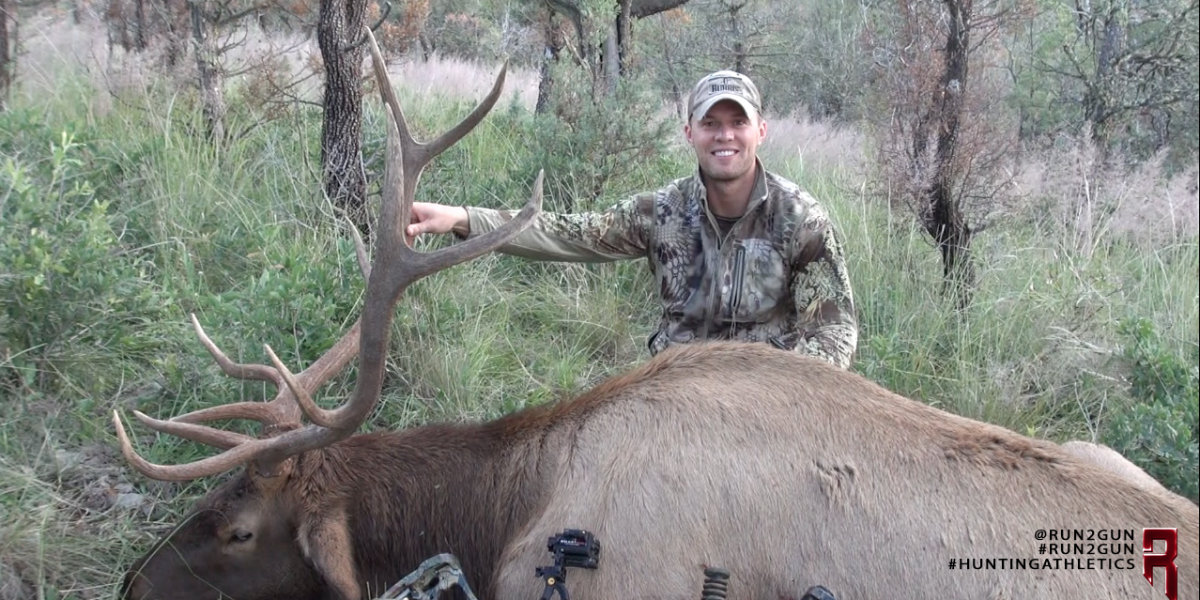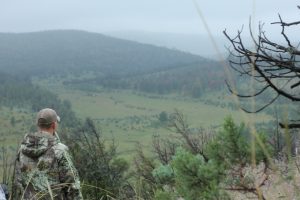Training for EACH and EVERY hunt, no matter the level of difficulty, is the way you need to approach you hunting seasons. This approach will keep you from falling off the “cliff” post hunt. Once you have finished your hunt, your training needs to carry on and adjust to your NEXT hunt.
Our hunting season kicked off in Southern New Mexico near Cloud Croft. Chasing bugling elk with a bow was our first priority of the year, and we trained specifically for higher elevation, rough terrain, long days on the mountains, and the hope of packing out 100+ pounds of elk on our packs.
This is how we specifically trained for our New Mexico elk hunt!
1. STRENGTH TRAIN: 8 weeks out from my hunt I changed my weight lifting regimen from a hypertrophy phase to specifically train for strength. Well what is strength? “Strength is the maximal force that a muscle or muscle group can generate at a specified velocity.” How did I train for strength? The weights for my lifts increases and my reps decreased. Repetitions always stayed under 6, and majority of my repetitions stayed at 5. Now since my reps were now lower I adjusted the number of sets I performed to a minimum of 5 working sets. This keeps the total volume (total amount of weight lifted during my session) high. Developing a tolerance to heavy weight training created a consistent overload to the CNS (central nervous system) preparing my body and mind for a consistent overload of stress on my body when I hit the mountains.
2. H.I.I.T: It is always believed that long hours of running, hiking, stair stepping, and incline walking with a heavy backpack on is the only way to train for an upcoming backcountry hunt. Though these methods are a great way to become accustomed to wearing a pack for long hours and prepare the heart rate at it’s steady state (65% of max heart rate) there is a faster, more efficient way to prepare your cardiovascular system. High Intensity Interval Training (H.I.I.T) is where 90% of my cardio sessions fell. I was doing 20-30 minutes of H.I.I.T training 2-3 days per week, which included track sprints, bike sprints, battling ropes, or car pushes. Hard to get bored training this way when you can change what you’re doing EVERY session. H.I.I.T training challenges the heart rate anaerobically (85%+ of your max heart rate). This will lower your steady state heart rate and make you more efficient for long duration hikes on the mountain.
3. STRETCHING/FOAM ROLLING: Most commonly looked over. I focused directly on keeping my muscles lengthened. I stretched after EVERY weight lifting session and focused on foam rolling at least 2-3 times per week. These methods decrease your risk of injury, promote faster recovery, and increases flexibility which directly relates back to muscular strength and power. I give much of the credit of “feeling great” after my hunt to my continued focus on stretching and corrective exercise.
4. MACRONUTRIENTS: Finally, all of my hard work and training would have never reached its full potential without the right nutrition plan. Taking in the proper amounts of macronutrients (Protein, Carbohydrates, Fats) will fuel your body, burn fat, and keep your energy levels high! I opted to lower my body fat percentage early in the summer and slowly build my macronutrients as my training volume increased. Finding the proper numbers to hit daily will ensure you hit your goals while maintaining a healthy daily recommended allowance of all your nutrients. A daily effort to my nutrition carried me through demands of my training as well as Mother Nature’s elements.
To have YOUR OWN PERSONALIZED training program designed for your next hunt or outdoor adventure, make sure to visit www.run2gun.com or www.facebook.com/run2gun
-Jordan
Resources: “Essentials of Strength Training and Conditioning, Third Edition. NSCA.” Thomas R. Baechle & Roger W. Earle. (c) 2008.


